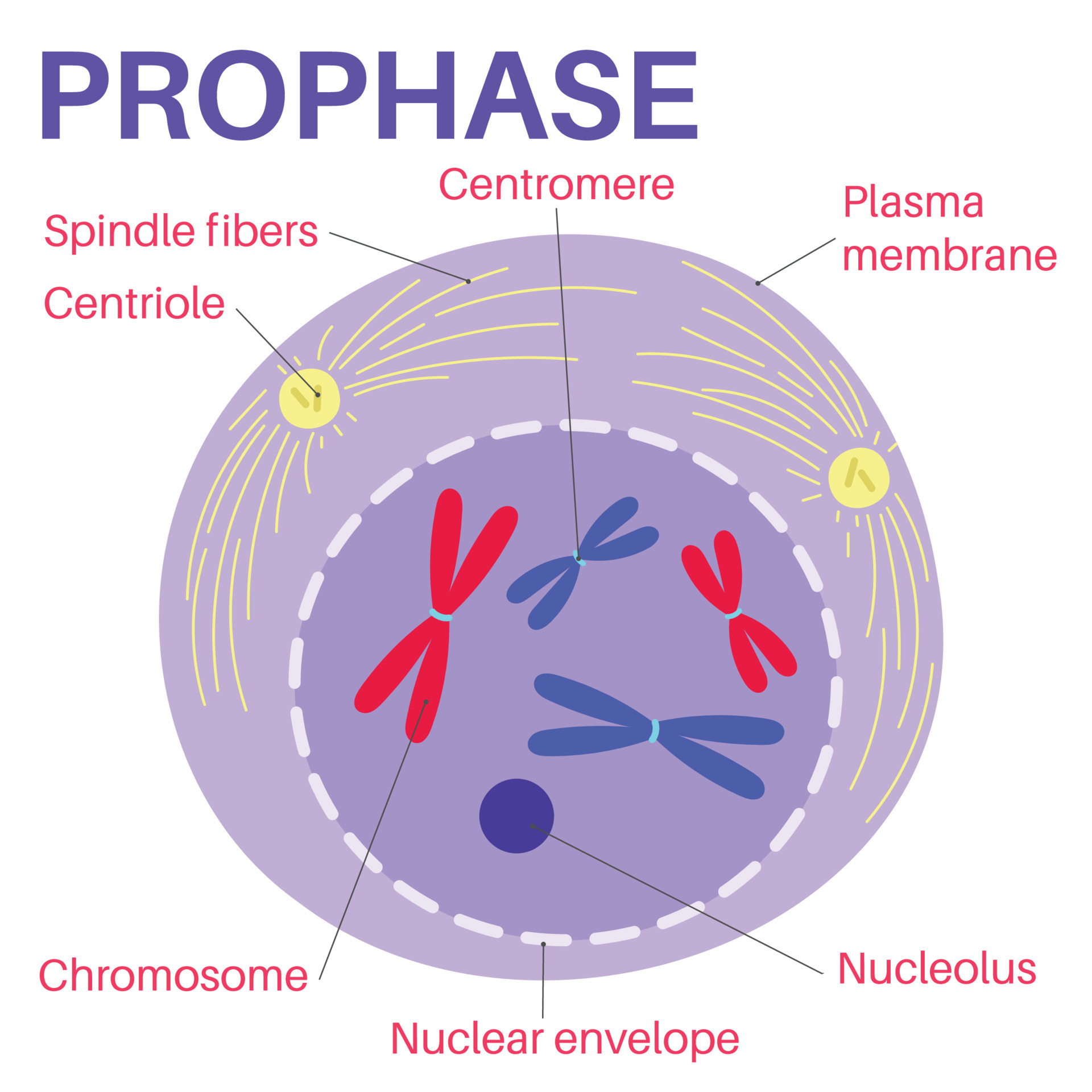During prophase i, chromosomes pair up and exchange genetic material, creating more variation. In this stage, the nuclear envelope breaks, letting the genetic material float free. Prophase is followed by metaphase. Mitosis, a key part of the cell cycle, involves a series of stages (prophase, metaphase, anaphase, and telophase) that facilitate cell division and genetic information transmission. Mitosis begins at prophase with the thickening and coiling of the chromosomes.
In meiosis i, cells go through four phases: Some textbooks list five, breaking prophase into an early phase (called prophase) and a late phase (called prometaphase). Web prophase is the first phase of mitosis, the process that separates the duplicated genetic material carried in the nucleus of a parent cell into two identical daughter cells. As in mitosis, the cell grows during g 1 phase, copies all of its chromosomes during s phase, and prepares for division during g 2 phase. During prophase, several important changes occur:
The mitotic spindle, composed of microtubules and proteins, forms in the cytoplasm. Centrosomes and microtubules play pivotal roles in orchestrating this complex process, ensuring the successful replication of cells. During prophase i, differences from. Prophase i is the first stage of meiosis i, followed by prophase ii, anaphase i, anaphase ii, metaphase i and metaphase ii. This is when the genetic fibers within the cell’s nucleus, known as chromatin, begin to condense and become tightly compacted together.
During prophase, chromatin condenses into chromosomes, and the nuclear envelope (the membrane surrounding the nucleus) breaks down. Web prophase is the first stage in mitosis, occurring after the conclusion of the g 2 portion of interphase. Prophase i, metaphase i, anaphase i, and telophase i. These phases are prophase, prometaphase, metaphase, anaphase, and telophase. It is the phase of dna unwinding and chromatin condensation to make the chromosomes visible. Web prophase is the phase that follows the interphase and typically the first and longest phase in the cell cycle, for both mitosis and meiosis. Prophase is the first step of mitosis. Web the first and longest phase of mitosis is prophase. Some textbooks list five, breaking prophase into an early phase (called prophase) and a late phase (called prometaphase). Prophase i is the first stage of meiosis i, followed by prophase ii, anaphase i, anaphase ii, metaphase i and metaphase ii. Prophase is followed by metaphase. Before entering meiosis i, a cell must first go through interphase. During prophase i, chromosomes pair up and exchange genetic material, creating more variation. Web in the second step, prophase, the bivalent chromosomes condense into tight packages, the mitotic spindle forms, and the nuclear envelope dissolves. Nuclear membrane breaks down, chromatin condenses, mitotic spindle forms and attaches to kinetochores.
Chromatin Fibers Become Coiled Into Chromosomes, With Each Chromosome Having Two Chromatids Joined At A Centromere.
In this stage, the nuclear envelope breaks, letting the genetic material float free. During prophase, several important changes occur: In animal cells, the centrioles near the nucleus begin to separate and move to opposite poles of the cell. During prophase i, differences from.
As In Mitosis, The Cell Grows During G 1 Phase, Copies All Of Its Chromosomes During S Phase, And Prepares For Division During G 2 Phase.
Kinetochore microtubules shorten, pulling sister chromatids to opposite poles, polar microtubules elongate, lengthening dividing cell. Some textbooks list five, breaking prophase into an early phase (called prophase) and a late phase (called prometaphase). You know this prophase is the first stage of mitosis cell division which may quickly identify with the help of a light microscope. Microtubules align chromosomes along metaphase plate.
Web Prophase Is The First Stage In Mitosis, Occurring After The Conclusion Of The G 2 Portion Of Interphase.
During interphase, the parent cell’s chromosomes are replicated, but they aren’t yet visible. Centrosomes start to form structures which help the cell through the rest of mitosis. Prophase i is the first stage of meiosis i, followed by prophase ii, anaphase i, anaphase ii, metaphase i and metaphase ii. It is the phase of dna unwinding and chromatin condensation to make the chromosomes visible.
Web In The Second Step, Prophase, The Bivalent Chromosomes Condense Into Tight Packages, The Mitotic Spindle Forms, And The Nuclear Envelope Dissolves.
Web prophase (versus interphase) is the first true step of the mitotic process. This organelle controls the microtubules in the cell, and each centriole is one half of the organelle. Mitosis begins at prophase with the thickening and coiling of the chromosomes. Web today, mitosis is understood to involve five phases, based on the physical state of the chromosomes and spindle.








